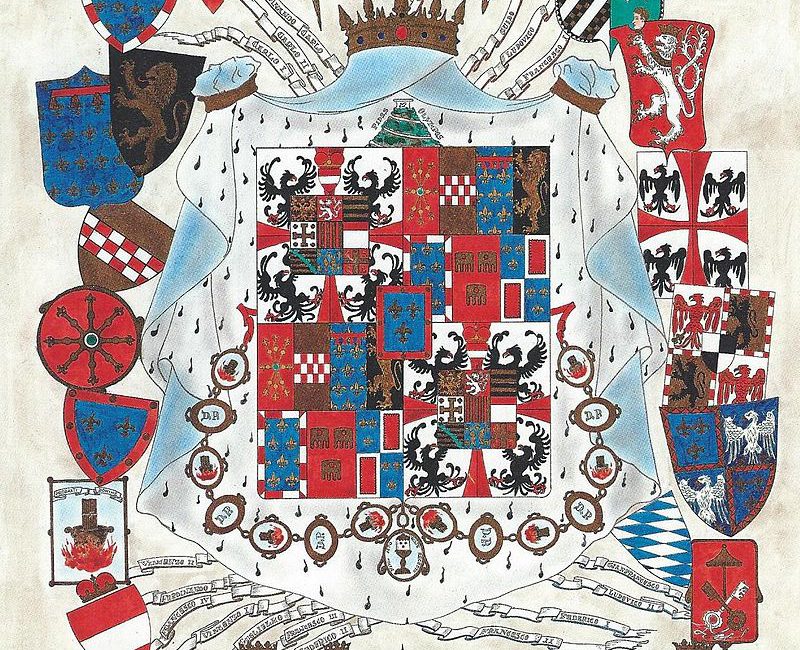
On the 16th of 1328, the famous Italian House of Gonzaga seized power in the Duchy of Mantua, and ruled until 1708. Starting from the 12th century, the family was growing their wealth, becoming a dominant one in Mantua. Allied with the Bonacolsi, they together defeated their common enemy – the House of Casalodi. Then the sly Ludovico I Gonzaga schemed against his former allies and overthrew the Bonacolsi lordship over the city in 1328 with the help of the Della Scala family. Ludovico made a clever move: he entered the Ghibelline party as capitano del popolo (“people’s captain”) of Mantua and imperial vicar of Holy Roman Emperor Louis IV. Ludovico I died in 1360 and was succeeded by his son Guido Gonzaga.
The family were Lords of Mantua at first. Federico II Gonzaga signed s marriage contract with Holy Roman Emperor Charles V’s third cousin, Julia of Aragon. As a result, in 1530 Federico was granted the ducal title, becoming Duke of Mantua. Frederico later managed to have this contract annulled and instead married Margaret Palaeologa, Marchioness of Montferra. In later centuries, the House of Gonzaga became one of the richest and most prominent Italian and European ruling dynasties. They also owned and ruled Monferrato in Piedmont, as well as many other lesser fiefs throughout Europe. Their family produced 12 cardinals and 14 bishops, as well as 2 Holy Roman Empresses: Eleonora Gonzaga and Eleonora Gonzaga-Nevers in the 16th and 17th centuries, respectively. In the first half of 17th century, Marie Louise Gonzaga became Queen of Poland. The Duchy of Mantua in northern Italy was known for its magnificent art collections, resulting from the dedicated patronage of the ruling family – the Gonzaga.

Ludovico II Gonzaga, Duke of Mantua, employed many famous artists and architects, among them Leon Battista Alberti and Andrea Mantegna, who served as their court painter for 3 generations. Leon Battista Alberti, born in Genoa in 1404, arrived in Mantua in the Pope’s entourage and stayed on for several months, but over the next years he returned several times to Mantua to perform various commissions. The great Andrea Mantegna stayed at the court of Mantua for 47 years! Mantegna’s masterpiece was painted for the Gonzaga family in the castle apartment today known as Camera degli Sposi (‘Wedding Chamber’) of Palazzo Ducale: a series of frescoes including portraits of the Gonzaga family and those of notable people. Mantegna enjoyed lucrative commissions from the cultured and intelligent Isabella d’Este. There was a flourishing Renaissance court in Mantua! Ludovico II’s great-grandson – Federico II Gonzaga, Duke of Mantua – persuaded Giulio Romano to come to Mantua, where Romano became the leading painter and architect. The Gonzaga’s court musicians included Claudio Monteverdi (his opera ‘L’Orfeo’ immortalized him), Giaches de Wert, Benedetto Pallavicino, and Carlo Berti, who composed masses, psalms, hymns, operas, and motets. One of the last notable Gonzaga patrons and collectors, Vincenzo I Gonzaga employed such northern artists such as the Flemish painter Frans Pourbus the Younger and Peter Paul Rubens.
All images are in the public domain.
Text © 2020 Olivia Longueville





